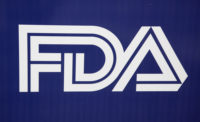FDA rolls out new Nutrition Facts label

FDA has released its modernized Nutrition Facts label that will give packaged foods products their biggest makeover since the labels were first released 20 years ago.
The refreshed design highlights the most relevant nutritional information and is a reflection of the latest science, which has changed since the labels became a requirement decades ago. While a product’s fat content was a primary concern in the 90s, today there is a larger focus on the overall amount of calories consumed which will now be displayed in larger, bolder type. Other changes to the label include a declaration for added sugars to help consumers know how much sugar is added to the product during the processing of food. The label also replaces out-of-date serving sizes to better align with the amount consumers actually eat.
“For more than 20 years, Americans have relied on the Nutrition Facts label as a leading source of information regarding calories, fat and other nutrients to help them understand more about the foods they eat in a day,” says Robert Califf, FDA Commissioner. “The updated label makes improvements to this valuable resource so consumers can make more informed food choices – one of the most important steps a person can take to reduce the risk of heart disease and obesity.”
First Lady Michelle Obama made the announcement Friday as part of her “Let’s Move!” campaign aimed at fighting childhood obesity.
“I am thrilled that the FDA has finalized a new and improved Nutrition Facts label that will be on food products nationwide,” Obama says. “This is going to make a real difference in providing families across
The major changes to the Nutrition Facts label include:
- A more prominent display of “calories,” “servings,” and “servings per container” that drives consumers’ attention to these elements.
- Requirements for declaring the amount of “Added Sugars” in a food product. This is consistent with the 2015 Dietary Guidelines for Americans and the Institute of Medicine’s determination that calorie intake from added sugar is too high in the US population and should be reduced.
- Updated serving size requirements to reflect the amounts people currently eat. What and how much people eat and drink has changed since the serving sizes were first put into place in 1993. By law, serving sizes must be based on the portion consumers actually eat.
- “Dual column” labels to highlight both “per serving” and “per package” calorie and nutrition information for the whole package of certain food products.
- An abbreviated footnote better explaining percent Daily Value.
- An updated list of nutrients required to be declared based off of public health significance. Vitamin D and potassium—nutrients Americans often do not get enough of—will be required. Calcium and iron will continue to be required. Vitamins A and C are no longer required but can be included on a voluntary basis.
Food manufacturers will have two years to comply with the new labeling requirements. Companies with less than $10 million in annual food sales will have an additional year to comply.
Looking for a reprint of this article?
From high-res PDFs to custom plaques, order your copy today!








